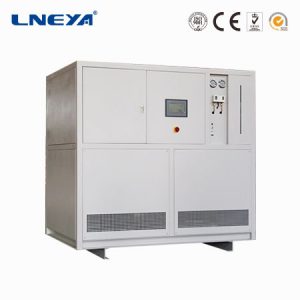The importance of temperature cycle control heating and cooling in the production of API
China has become the world’s largest supply market for APIs. Most of the APIs and intermediates required by foreign manufacturers are purchased in my country. The drug outsourcing process of most of its preparation products, the production process of APIs is much more complicated, the process is long, the pipelines are many, the operation is complicated, and most of the APIs are unstable, such as high environmental parameters such as temperature, humidity, and light. Raw materials are also flammable and explosive. Different from the preparation product process, most of the production process of APIs is a cross-fusion process of chemical and physical, such as product discoloration, extraction and adsorption.
In the pharmaceutical industry, the temperature control process runs through research to production. In order to obtain high-quality reaction products, the temperature control system must reliably control the process changes in the external reactor.
Pharmaceutical companies use a variety of continuous or mass production processes to produce their products. Depending on the final form of the product, use extrusion equipment, agitators, mixers or jacketed containers. Each of these steps requires heating, cooling, or both during the manufacturing process and due to the inherent chemical nature of the drug, they may be more sensitive to processing time and temperature exposure than many other consumer products.
Cooling heating system or temperature control of heating system is used for pharmaceutical processing, cooling/heating cycle control process. Because the temperature of the product is always consistent and accurate throughout the mixing operation, the pharmaceutical processing equipment has achieved uniform mixing to a large extent. Temperatures outside the established range usually have an adverse effect on the active pharmaceutical ingredient (API).
Lneya dynamic temperature control system is used for dynamic constant temperature control of cold and heat sources of various reactor reactors. The temperature range is -120 ℃ to 350 ℃, ultra-high temperature cooling technology can be directly cooled from the high temperature of 300 ℃. High temperature heat medium will not evaporate at high temperature, continuous control can be achieved in the range of -80 ℃ to 190 ℃, using plate heat exchangers, tube heaters to increase heating and cooling rate. It is mainly used in conjunction with double-layer glass reactors and can provide heat and cold source circulation devices. It has a wide working range and is used in pharmaceutical, chemical, biochemical, biological and other industries. It also provides heat and cold sources for reactors and tanks. It is also available. Used for heating and cooling of other equipment.
Related recommendations
-
The role of temperature control system TCU in chemical and pharmaceutical reactor
1994The temperature control of the reaction kettle in drug research and development and chemical experiments, as well as the temperature control in small-scale experimental production and industrial production processes, require highly dynamic tempera...
View details -
What is the principle of industrial air-cooled chillers
2257Many industrial productions are inseparablefrom the low-temperature production environment provided by the chiller andcannot obtain efficient production capacity. Therefore, industrial chillerequipment is a very important refrigeration equipmen...
View details -
Operating instructions for the chiller, a laboratory process temperature control cycle system
1697The heat transfer medium of the laboratory process temperature control circulation system chiller uses oil and water. It uses electric heating to heat the heat transfer medium (heat transfer oil or water) that is forced to circulate in the pipelin...
View details -
Refrigerating Output of Low Temperature Cooling Circulator
1373The refrigerating output of low temperature cooling circulator varies with different working conditions. So, when the process calculation is carried out at the beginning, it is necessary to set an allowance for the refrigerating output of the heat...
View details
 LNEYA Industrial Chillers Manufacturer Supplier
LNEYA Industrial Chillers Manufacturer Supplier















